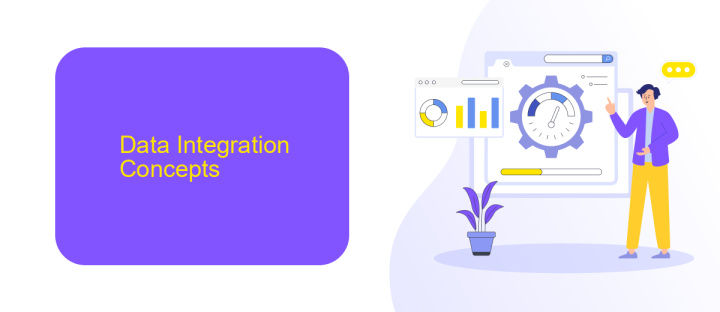Large Scale Data Integration
Large-scale data integration is a critical process in modern data management, enabling organizations to combine vast datasets from diverse sources into a unified, coherent system. This integration not only enhances data accessibility and reliability but also drives informed decision-making and innovation. As businesses increasingly rely on data-driven strategies, the importance of efficient and scalable data integration solutions cannot be overstated.
Introduction
Large scale data integration is a critical component in modern data management, enabling organizations to combine data from various sources to drive actionable insights. As businesses grow, the volume, variety, and velocity of data increase, making integration both a challenge and a necessity. Effective data integration can lead to improved decision-making, operational efficiency, and competitive advantage.
- Combining data from disparate sources
- Ensuring data quality and consistency
- Real-time data synchronization
- Scalability and performance
- Security and compliance
Tools like ApiX-Drive facilitate seamless data integration by automating the process of connecting various applications and services. This platform supports a wide range of integrations, enabling businesses to streamline workflows and ensure that data is consistently up-to-date across all systems. By leveraging such tools, organizations can focus on deriving value from their data rather than getting bogged down by integration complexities.
Data Integration Concepts

Data integration is the process of combining data from different sources to provide a unified view. This practice is essential in various fields, including business intelligence, where it helps in making informed decisions. Data integration involves several steps, such as data extraction, transformation, and loading (ETL). These steps ensure that data from disparate systems is harmonized and made accessible in a consistent format. The primary goal is to enhance data quality and accessibility, enabling organizations to leverage the full potential of their data assets.
In the context of large-scale data integration, automation tools like ApiX-Drive play a crucial role. ApiX-Drive simplifies the integration process by offering a platform that connects various applications and services without the need for extensive coding. By providing pre-built connectors and a user-friendly interface, ApiX-Drive enables businesses to streamline their data workflows and reduce the time and effort required for manual integration. This allows organizations to focus on analyzing and utilizing their data rather than getting bogged down by the complexities of integration.
Challenges in Large Scale Data Integration

Large scale data integration presents numerous challenges that organizations must address to ensure seamless and efficient data management. The complexity increases with the volume, variety, and velocity of data, requiring robust strategies and tools to handle the integration process effectively.
- Data Quality: Ensuring the accuracy, consistency, and completeness of data from diverse sources.
- Scalability: Handling the exponential growth of data without compromising performance.
- Interoperability: Integrating data from various systems and formats while maintaining compatibility.
- Security and Privacy: Protecting sensitive data during integration and complying with regulations.
- Real-time Processing: Achieving timely data integration to support real-time analytics and decision-making.
To address these challenges, tools like ApiX-Drive can be instrumental. ApiX-Drive offers a user-friendly interface for setting up integrations, automating data workflows, and ensuring data quality and security. By leveraging such services, organizations can streamline their data integration processes, making them more efficient and scalable.
Techniques for Large Scale Data Integration

Integrating large-scale data from various sources is a complex task that requires robust techniques to ensure data consistency and reliability. One of the primary challenges is handling the vast volume and variety of data while maintaining performance and accuracy. Efficient data integration techniques are essential for transforming raw data into valuable insights.
Several strategies can be employed to manage large-scale data integration. These include data warehousing, ETL (Extract, Transform, Load) processes, and the use of middleware solutions. Each method has its own set of advantages and is chosen based on the specific requirements of the integration project.
- Data Warehousing: Consolidates data from multiple sources into a single repository for analysis and reporting.
- ETL Processes: Extracts data from different sources, transforms it into a suitable format, and loads it into a target system.
- Middleware Solutions: Facilitates communication and data exchange between disparate systems.
ApiX-Drive is a notable service that simplifies large-scale data integration by providing automated workflows and real-time data synchronization. It supports a wide range of applications and databases, enabling seamless integration without extensive coding. This tool can significantly enhance the efficiency and scalability of data integration projects.


Conclusion
In conclusion, large scale data integration is a critical component for modern enterprises aiming to harness the full potential of their data assets. The complexity of integrating diverse data sources and ensuring seamless data flow across systems requires robust strategies and reliable tools. Effective data integration enables organizations to achieve enhanced decision-making, operational efficiency, and improved customer experiences.
Utilizing advanced integration services like ApiX-Drive can significantly streamline the process. ApiX-Drive offers a versatile platform that simplifies the setup and management of data integrations, allowing businesses to connect various applications without extensive technical expertise. This not only reduces the time and cost associated with data integration but also ensures that data is consistently accurate and up-to-date. As data continues to grow in volume and complexity, leveraging such tools will be indispensable for maintaining a competitive edge.
FAQ
What is Large Scale Data Integration?
Why is Large Scale Data Integration important for businesses?
What challenges are commonly faced in Large Scale Data Integration?
How can automation help in Large Scale Data Integration?
What are the best practices for successful Large Scale Data Integration?
Time is the most valuable resource in today's business realities. By eliminating the routine from work processes, you will get more opportunities to implement the most daring plans and ideas. Choose – you can continue to waste time, money and nerves on inefficient solutions, or you can use ApiX-Drive, automating work processes and achieving results with minimal investment of money, effort and human resources.

